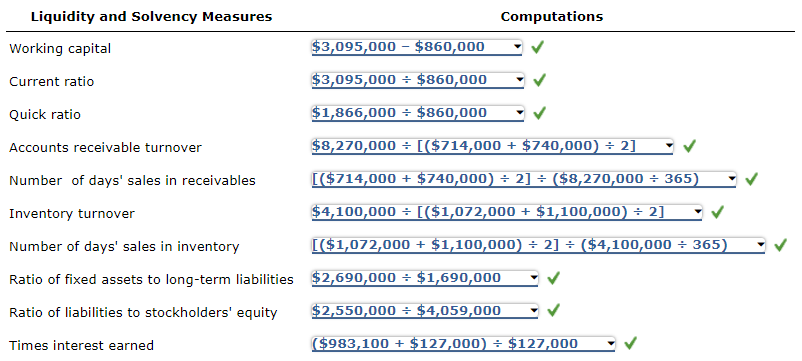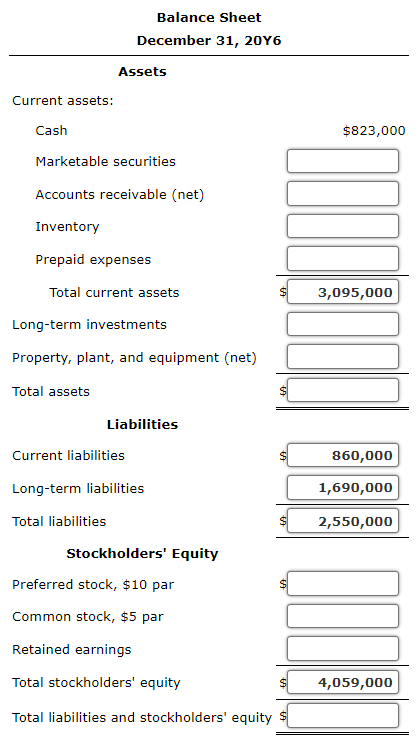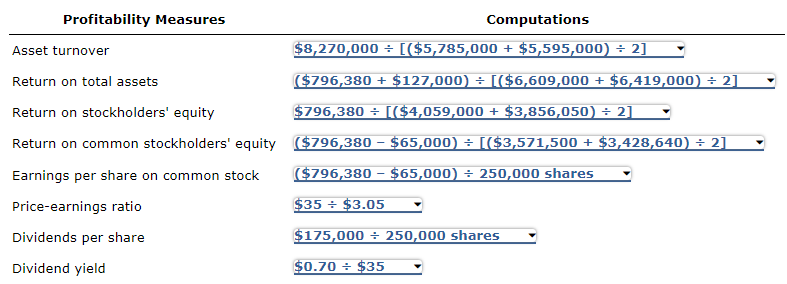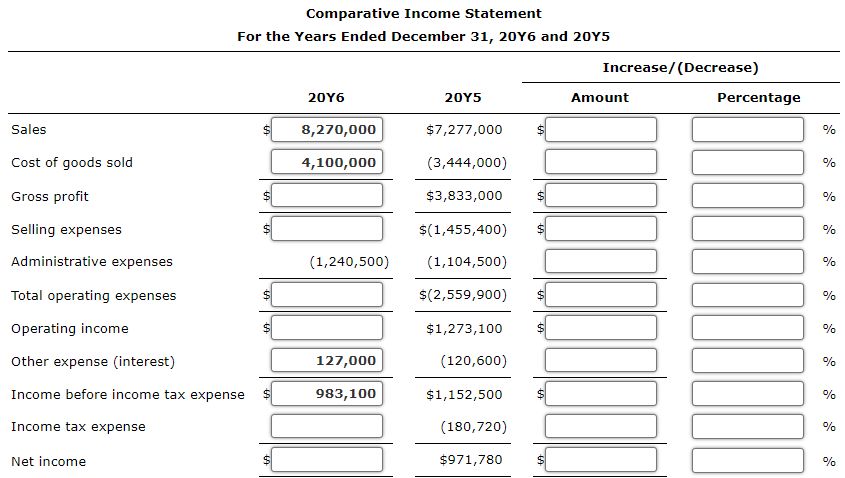Question
Liquidity and Solvency Measures Your friend, another accountant, has bet you that with your knowledge of accounting and just the computations for common analytical measures,
Liquidity and Solvency Measures
Your friend, another accountant, has bet you that with your knowledge of accounting and just the computations for common analytical measures, you can figure out many aspects of a company's financial statements. You take the bet!
Match each computation to one of the liquidity and solvency measures in the table.

Balance Sheet
Use the following balance sheet form to enter amounts you identify from the computations on the Liquidity and Solvency Measures part. You will identify other amounts for the balance sheet on the Profitability Measures part. If you have a choice of two amounts, assume the first amount in the ratio is for the end of the year. Compute any missing amounts.

Profitability Measures
Match each computation to one of the profitability measures in the table.

Comparative Income Statement
Use the following comparative income statement form to enter amounts you identify from the computations on the Liquidity and Solvency Measures part and on the Profitability Measures part. Compute any missing amounts and complete the horizontal analysis columns. Enter percentages as decimal amounts, rounded to one decimal place. When rounding, look only at the figure to the right of one decimal place. If 
Final Questions
Your accountant friend reveals that the company whose information you have been working on is actually a company he is thinking of investing in. What advice and insight do you have for your friend?
Using only the information from your horizontal analysis of the comparative income statement, complete the following sentences.
(Net income, Sales, Cost of Goods Sold, Other Expense - interest) __________has decreased significantly from 20Y5 to 20Y6, even though (net income, sales, cost of goods sold, selling expenses) ________has increased. However, ________(net income, sales, cost of goods sold) has also (increased, decreased, not changed) ________ which slowed the increase in (gross profit, net income, sales, total operating expenses). In addition, (selling expenses, income tax expense, other expense-interest) has increased at a faster rate. The company appears (to be struggling, to be too heavily leveraged, to be a good investment, to be taking the right steps, to be growing).
Balance Sheet December 31, 20Y6 Assets Current assets: Cash Marketable securities Accounts receivable (net) Inventory Prepaid expenses Total current assets Long-term investments Property, plant, and equipment (net) Total assets Liabilities Current liabilities Long-term liabilities Total liabilities Stockholders' Equity Preferred stock, \$10 par Common stock, \$5 par Retained earnings Total stockholders' equity Total liabilities and stockholders' equity $823,000 \begin{tabular}{ll} \multicolumn{1}{c}{ Profitability Measures } & \multicolumn{1}{c}{ Computations } \\ \hline Asset turnover & $8,270,000[($5,785,000+$5,595,000)2] \\ Return on total assets & ($796,380+$127,000)[($6,609,000+$6,419,000)2] \\ Return on stockholders' equity & $796,380[($4,059,000+$3,856,050)2] \\ Return on common stockholders' equity & ($796,380$65,000)[($3,571,500+$3,428,640)2] \\ Earnings per share on common stock & ($796,380$65,000)250,000shares \\ Price-earnings ratio & $35$3.05 \\ Dividends per share & $175,000250,000 shares \\ Dividend yield & $0.70$35 \end{tabular} Comparative Income Statement For the Years Ended December 31, 20 Y6 and 20 Y5Step by Step Solution
There are 3 Steps involved in it
Step: 1

Get Instant Access to Expert-Tailored Solutions
See step-by-step solutions with expert insights and AI powered tools for academic success
Step: 2

Step: 3

Ace Your Homework with AI
Get the answers you need in no time with our AI-driven, step-by-step assistance
Get Started


